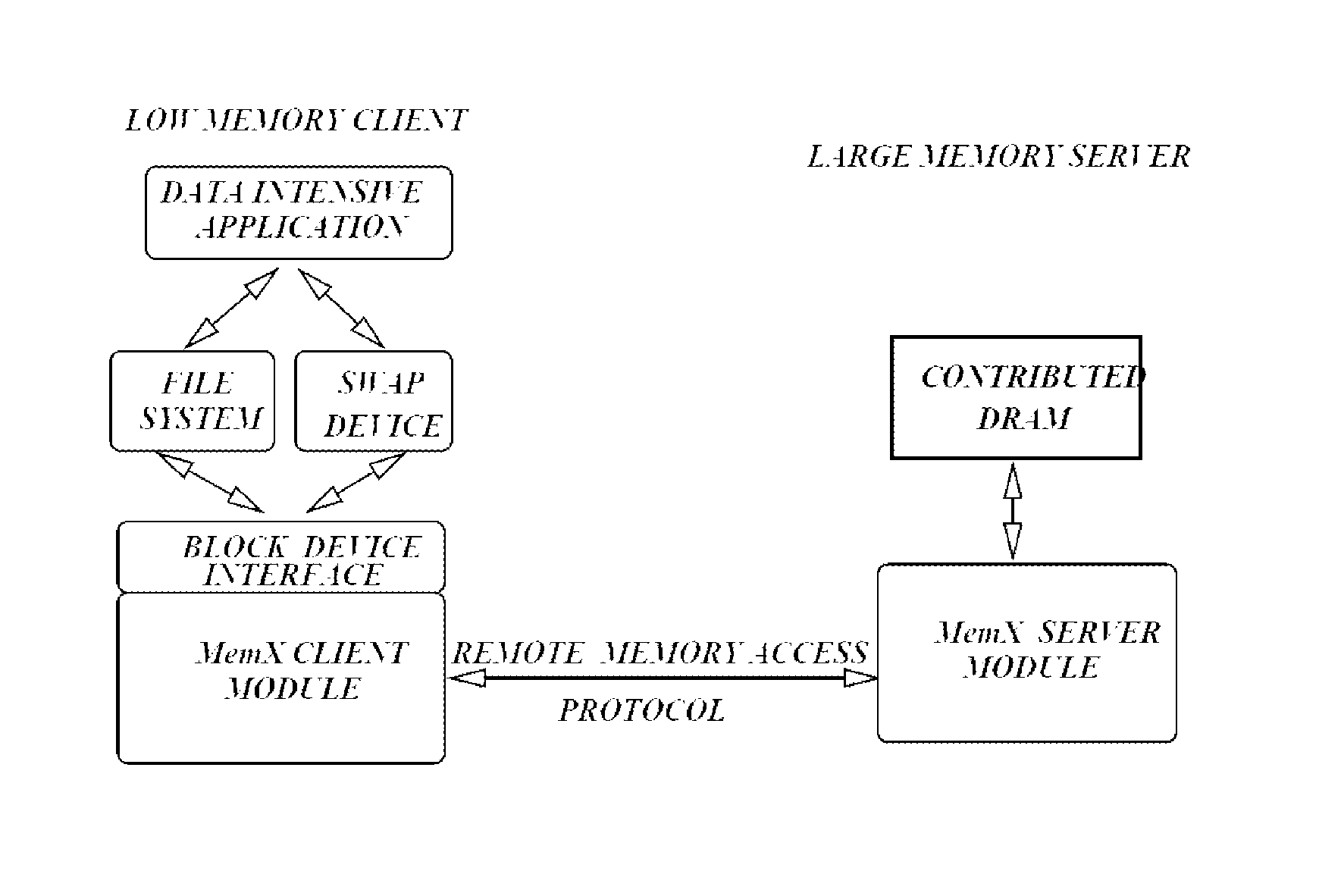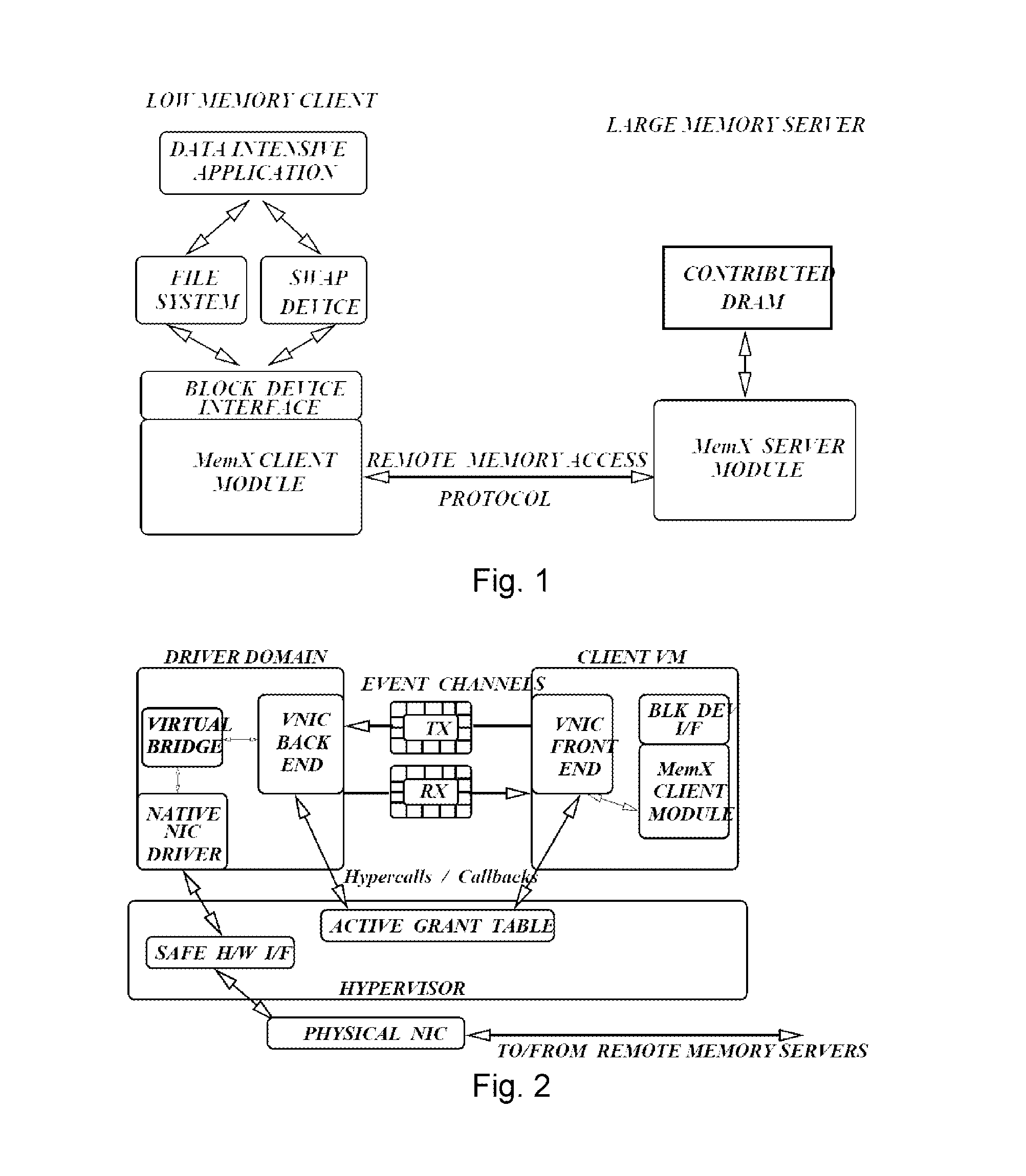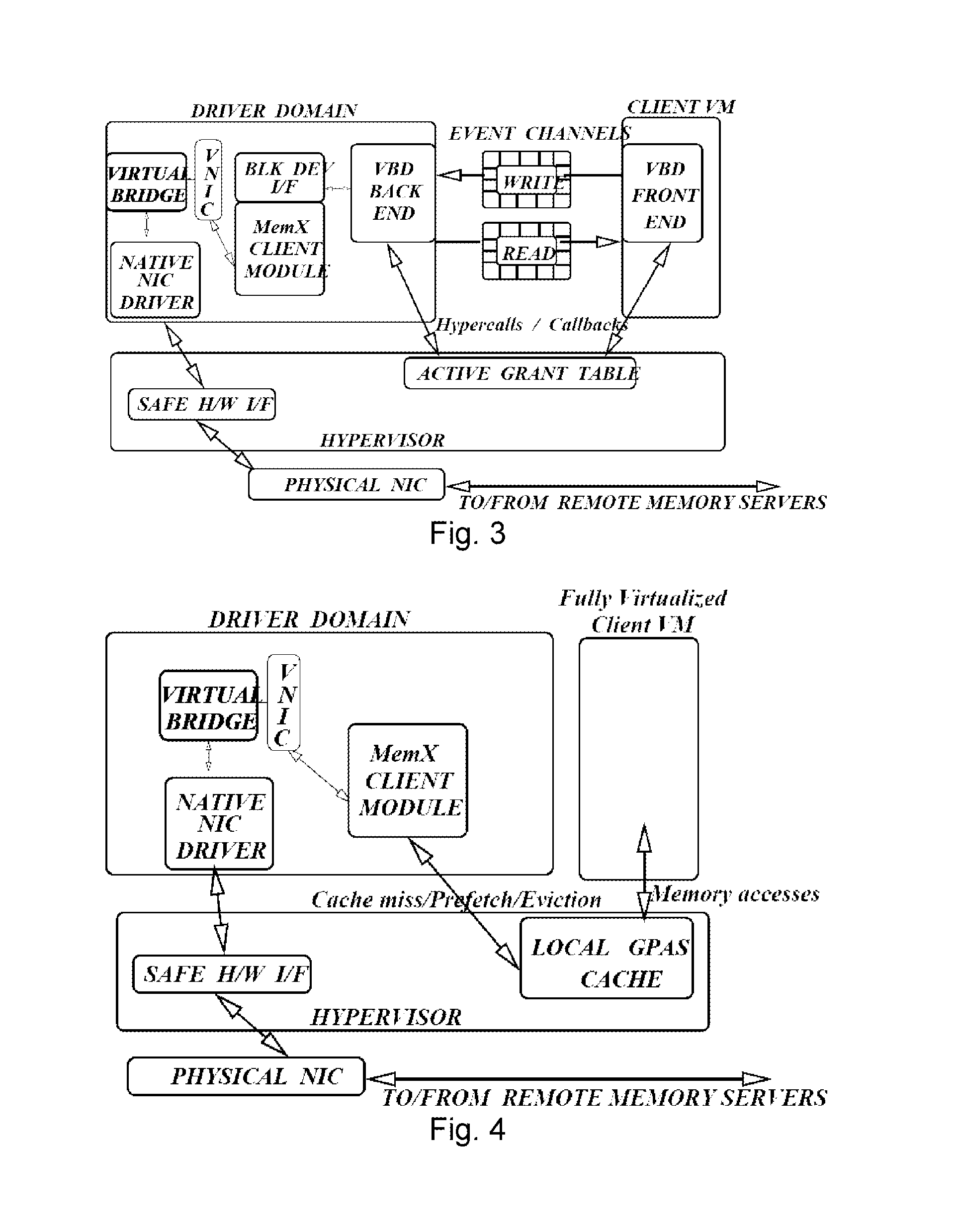MemX: virtualization of cluster-wide memory
a cluster-wide memory and virtualization technology, applied in computing, instruments, electric digital data processing, etc., can solve the problems of i/o and memory requirements of such vms that can easily exceed the limited resources allocated, and i/o operations can become a bottleneck,
- Summary
- Abstract
- Description
- Claims
- Application Information
AI Technical Summary
Benefits of technology
Problems solved by technology
Method used
Image
Examples
Embodiment Construction
[0056]Various configurations in which MemX can operate are described, and their relative merits compared.
[0057]A. MemX-VM: MemX Client Module in VM
[0058]In order to support memory intensive large dataset applications within a VM environment, the first design option is to place the MemX client module within the guest OS in the VM. This option is shown in FIG. 2. On one side, the client module exposes a block device interface for large memory applications within the VM. On the other side, the MemX client module communicates with remote MemX servers via a virtualized network interface (VNIC). VNIC is an interface exported by a special VM called the driver domain which has the privileges to directly access all I / O devices in the system. (Driver domain is usually synonymous with Domain 0 in Xen).
[0059]The VNIC interface is organized as a split device driver consisting of a frontend and a backend. The frontend resides in the VM and the backend in the driver domain. Frontend and backend co...
PUM
 Login to View More
Login to View More Abstract
Description
Claims
Application Information
 Login to View More
Login to View More - R&D
- Intellectual Property
- Life Sciences
- Materials
- Tech Scout
- Unparalleled Data Quality
- Higher Quality Content
- 60% Fewer Hallucinations
Browse by: Latest US Patents, China's latest patents, Technical Efficacy Thesaurus, Application Domain, Technology Topic, Popular Technical Reports.
© 2025 PatSnap. All rights reserved.Legal|Privacy policy|Modern Slavery Act Transparency Statement|Sitemap|About US| Contact US: help@patsnap.com



